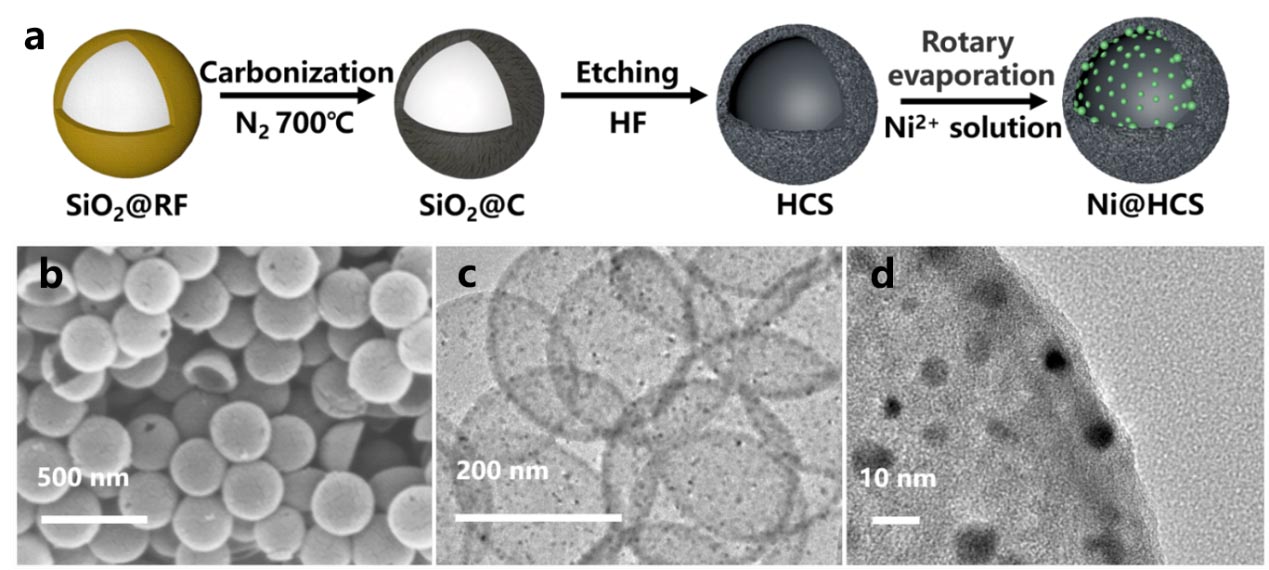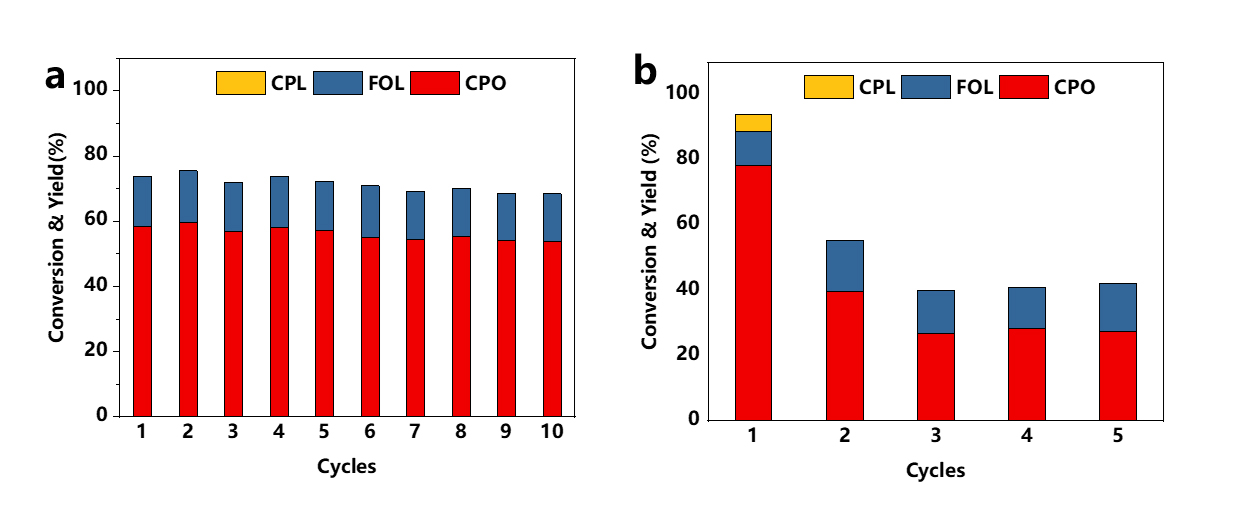
A research team from the Hefei Institutes of Physical Science (HFIPS) of the Chinese Academy of Sciences has recently obtained a catalyst composed of the hollow carbon sphere and inner Ni nanoparticles (Ni@HCS), which displayed good performance when applied in the aqueous phase hydrogenation rearrangement tandem reaction of furfural (FAL), a typical aqueous phase reaction.
They found that it can afford 100 % FAL conversion and 99% cyclopentanone selectivity at a mild condition (150 °C, 2 MPa H2, 4h).
In heterogeneous catalysis, the deactivation of catalysts caused by active metal loss, agglomeration, and sintering has always been the crux of limiting the development of supported metal catalysts, especially in the aqueous phase under high temperature. In addition, improving the selectivity of the target product in the reaction is also a big challenge in catalyst preparation.
Thanks to the shape-selective catalysis induced by the void-confinement effect of the hollow structure, the selectivity of Ni@HCS to the target product is improved compared with active carbon supported catalysts.
More importantly, this hollow structure catalyst showed much better stability compared with active carbon supported catalysts as it can maintain its activity after ten cycle experiments. According to CHEN Chun, a member of the team, it's because the protective effect of hollow carbon spheres on active metals greatly reduced the loss of metals in the reaction process.
They have conducted more experiments to explained the phenomena. Inductively Coupled Plasma-Atomic Emission Spectrometry results show that the Ni content of Ni@HCS has a tiny change after the reaction while the active carbon supported catalysts show over 60% metal loss during the reaction. In addition, the synthetic method is also applicable to other metal catalysts and other reactions.
This work has been published in Applied Catalysis B: Environmental and it was supported by the National Natural Science Foundation of China.

Fig. 1. (a). synthesis process of the catalyst; (b). SEM image of Ni@HCS; (c, d). TEM images of Ni@HCS. (Image by HU Zhi)

Fig. 2. (a). cycle performance of Ni@HCS; (b). cycle performance of Ni catalyst using active carbon as support. (Image by HU Zhi)

86-10-68597521 (day)
86-10-68597289 (night)

52 Sanlihe Rd., Xicheng District,
Beijing, China (100864)

